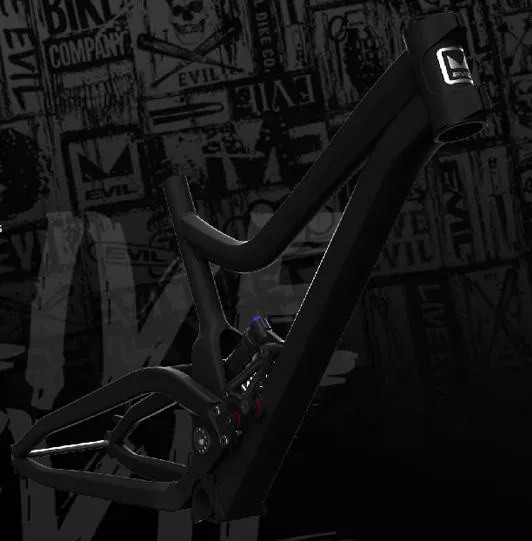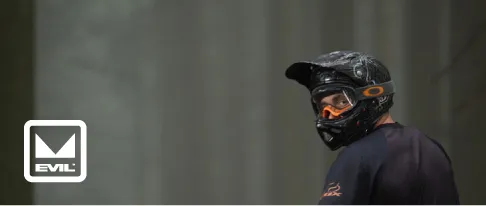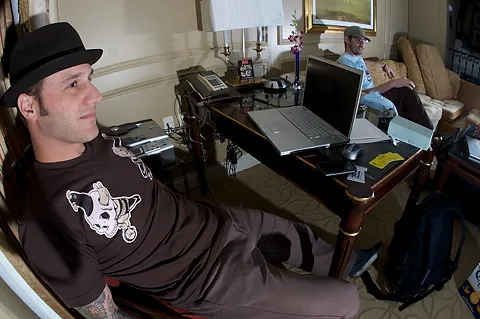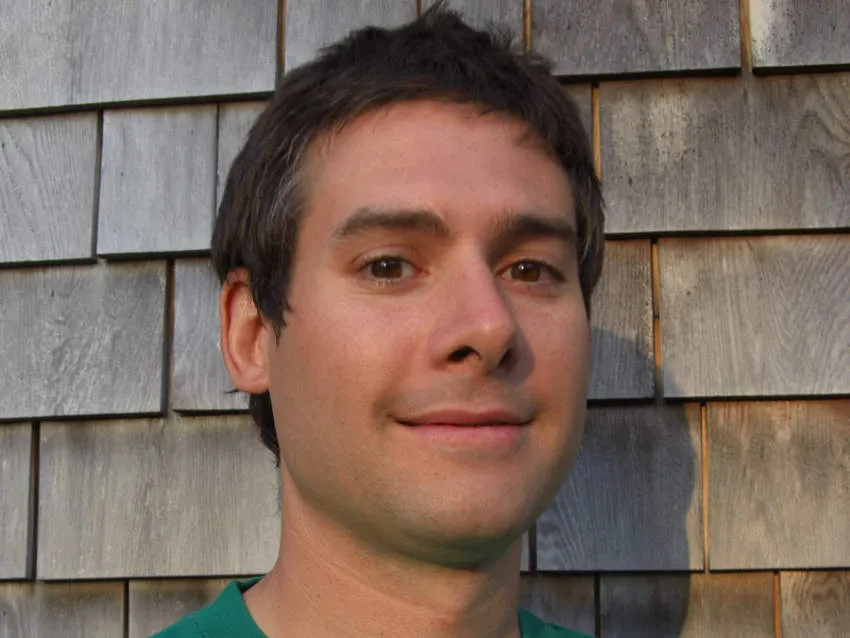One of the biggest news stories from this autumn's Interbike show in Las Vegas was that Evil Bikes was back from the dead and about to launch a new downhill bike. The firm had built up a small but loyal following before it was closed in 2007, but it was hardly a household name, so why all the fuss?
The excitment was due to the fact that three industry veterans had thrown their weight behind the brand and their bikes would be based on a new design by suspension mastermind Dave Weagle. BikeRadar spoke to Todd Seplavy, the company's product development and global marketing manager, about his Evil plan for world domination.
Evil reborn
Evil bikes was closed in 2007 by then-owner Dave Weagle after his other interests went supernova – he's the man behind e.thirteen bashguards and the dw-link suspension design used on the world-beating Iron Horse Sunday downhill bike. Until recently, the only sign of activity on Evil's official website was a teasing statement that the brand would be delivered into safe hands.
Then, in September, after finding big enough gaps in their other commitments, the new owners were revealed as Todd Seplavy, Kevin Walsh and Gabe Fox.
Seplavy has worked in the industry for 10 years, with notable success, in particular, with the rebirth of Iron Horse. Having completed a short and enjoyable spell at Specialized, he says he was "ready to get back to my roots and start from scratch."
Walsh is the head honcho of the graphic design company Superbig Creative. He designed Iron Horse's graphics, where he met Seplavy. Keen to brand his own product, in addition to his work for others, he is Evil's creative director and financial operations manager.
Fox is Evil's assistant product development and global sales manager. He cut his teeth at Sombrio, then at Cove, but was looking for a new challenge and a change of scenery.
Evil mastermind
Fittingly, the Evil trio have licensed Weagle's new suspension platform, Delta, for exclusive use on the Evil full-suspension line-up. Seplavy says the new system uses a clever offset shock to create "a new take on a single pivot design, driven by two links" which he believes will "create a perfect suspension feel for its desired applications".
It allows for what Seplavy calls "Voice and Choice" – a concept designed to ensure that it is the rider who defines the ride's characteristics and geometry, as opposed to the usual setup where the rider has to fit in with the bike's limited range of options.
"Delta can achieve this with no change or compromise to leverage or wheel rates, allowing the rider the unique opportunity to set the bike up within a wide continuum to suit their riding styles and the terrain," Seplavy said.
The Delta suspension system will be used on the 203mm Revolt downhill bike, which Evil hopes will meet the needs of the most fiercely competitive gravity racers. Delta will also be used on the Division all-mountain and Sect trail bikes that will have 160mm and 140mm of travel respectively. The aim is for these bikes to be flowing singletrack demons, able to rail the descents as well as climb back up the hills again.

Evil resurrected
Seplavy, Walsh and Fox have decided to resurrect Evil's proven and popular hardtails, with subtle tweaks to the geometry to suit the current crop of 140mm and 160mm forks. The Sovereign high-end chromoly and Imperial aluminium hardcore trail frames are back, tweaked accordingly. However, the D.O.C (Drug of Choice) jump bike has been retired and replaced with the Faction – a pure dirt jump frame.
The trio are keen to also explore some special products development. This, as Seplavy says, "could be anything from a carbon hardtail to a cyclo-cross bike, with a 700c aggressive commuter bike called the Resident already penciled in. Anything is possible, as long as it has the same Evil spirit."
The new generation of Evil bikes will be made in the US and Taiwan. Seplavy says their aim "was to try to secure the best of each country's knowhow and proven expertise". In addition, he feels the chosen manufacturers meet the company's strict environmental and sustainable manufacturing standards.
For the good of Evil
The research and development department will be based in the US, but also out on the world race circuit. Seplavy is pleased to have Thomas Vanderham on board, in a developmental role, as the front of Evil's assault on big mountain freeride eventing and as the poster boy of Evil.

"We'll be teaching him the business ropes so he can go on to specialise in an area for the good of Evil when he retires, if he so chooses," Seplavy said of Vanderham.
Vanderham has been busy testing spraypainted black Evil prototypes, as well as riding other bikes like the Iron Horse Sunday he used at the recent Red Bull Rampage, to help Weagle and the Evil engineers define the perfect ride for him in time for the '09 season.

Steve Smith, the red hot 18-year-old Canadian Downhill protégé, has also just joined them and will be competing in the US Open, Canadian nationals and World Cup calendars.
In addition, there will be other, as yet undecided, team riders unleashing themselves in the name of Evil in forthcoming seasons.
The Evil lifestyle
The Evil guys have a punk rock DIY mentality, drawing their influences not only from mountain biking, but also from a range of action sport industries including BMX and snow sports. But they have nothing but praise for the bigger corporate brands.
"A lot of big bike companies started as indie brands, with the owners being cyclists first, before being businessmen," Seplavy said, pointing to Specialized founder Mike Sinyard and Gary Fisher, who continue to have this rider-owned business philosophy, riding their bikes regularly for fun, as well as for competition.
Although Seplavy looks up to Sinyard and Fisher for successfully creating identifiable brands, he and his Evil colleagues are hoping to take their business one step further, by creating Evil as a lifestyle choice. With the Evil name they certainly have an instant advertising hook that can be exploited by Walsh and Seplavy as masters of brand promotion.
Seplavy suggests that in relation to branding, people often find the bike company that fits their personal aesthetic, then the bike in the range that meets their needs. "Sometimes this is scuppered by boring design, especially graphics," he added. For the Evil range, they aim to overcome this with interchangeable graphic options.
"With each Evil frame, you can have anything from a totally raw frame up to a range of designs that have been realized by various guest graphic designers to suit personal preference."
Seplavy, Walsh and Fox feel that there is potential for Evil to expand beyond aggressive mountain biking, into the spheres of commuting and cyclo-cross, as well as BMX, snowboarding and leisure and racewear. The aim is to offer Evil's take on each discipline, while also reinforcing Evil as a lifestyle choice.
Can Evil live up to the hype?
Expect Evil products to start appearing in Spring 2009. Only then will we know whether they live up to the hype that is being generated around the second generation of the Evil brand.

